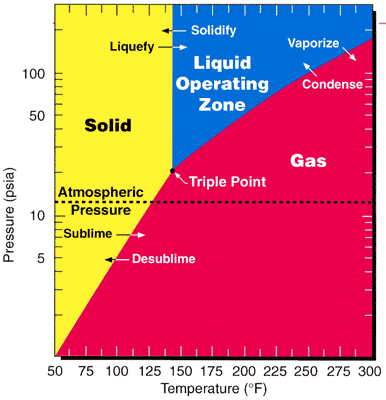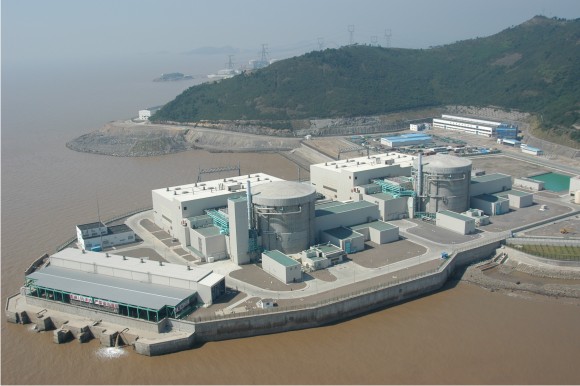|
Enriched Uranium
Enriched uranium is a type of uranium in which the percent composition of uranium-235 (written 235U) has been increased through the process of isotope separation. Naturally occurring uranium is composed of three major isotopes: uranium-238 (238U with 99.2739–99.2752% natural abundance), uranium-235 (235U, 0.7198–0.7202%), and uranium-234 (234U, 0.0050–0.0059%). 235U is the only nuclide existing in nature (in any appreciable amount) that is fissile with thermal neutrons. Enriched uranium is a critical component for both civil nuclear power generation and military nuclear weapons. The International Atomic Energy Agency attempts to monitor and control enriched uranium supplies and processes in its efforts to ensure nuclear power generation safety and curb nuclear weapons proliferation. There are about 2,000 tonnes of highly enriched uranium in the world, produced mostly for nuclear power, nuclear weapons, naval propulsion, and smaller quantities for research reactors ... [...More Info...] [...Related Items...] OR: [Wikipedia] [Google] [Baidu] |
Uranium
Uranium is a chemical element with the symbol U and atomic number 92. It is a silvery-grey metal in the actinide series of the periodic table. A uranium atom has 92 protons and 92 electrons, of which 6 are valence electrons. Uranium is weakly radioactive because all isotopes of uranium are unstable; the half-lives of its naturally occurring isotopes range between 159,200 years and 4.5 billion years. The most common isotopes in natural uranium are uranium-238 (which has 146 neutrons and accounts for over 99% of uranium on Earth) and uranium-235 (which has 143 neutrons). Uranium has the highest atomic weight of the primordially occurring elements. Its density is about 70% higher than that of lead, and slightly lower than that of gold or tungsten. It occurs naturally in low concentrations of a few parts per million in soil, rock and water, and is commercially extracted from uranium-bearing minerals such as uraninite. In nature, uranium is found as uranium-238 (99. ... [...More Info...] [...Related Items...] OR: [Wikipedia] [Google] [Baidu] |
Nuclear Marine Propulsion
Nuclear marine propulsion is propulsion of a ship or submarine with heat provided by a nuclear reactor. The power plant heats water to produce steam for a turbine used to turn the ship's propeller through a gearbox or through an electric generator and motor. Nuclear propulsion is used primarily within naval warships such as nuclear submarines and supercarriers. A small number of experimental civil nuclear ships have been built. Compared to oil- or coal-fuelled ships, nuclear propulsion offers the advantages of very long intervals of operation before refueling. All the fuel is contained within the nuclear reactor, so no cargo or supplies space is taken up by fuel, nor is space taken up by exhaust stacks or combustion air intakes. However, the low fuel cost is offset by high operating costs and investment in infrastructure, so nearly all nuclear-powered vessels are military. Power plants Basic operation of naval ship or submarine Most naval nuclear reactors are of the pressuriz ... [...More Info...] [...Related Items...] OR: [Wikipedia] [Google] [Baidu] |
Graphite
Graphite () is a crystalline form of the element carbon. It consists of stacked layers of graphene. Graphite occurs naturally and is the most stable form of carbon under standard conditions. Synthetic and natural graphite are consumed on large scale (300 kton/year, in 1989) for uses in pencils, lubricants, and electrodes. Under high pressures and temperatures it converts to diamond. It is a weak conductor of heat and electricity. Types and varieties Natural graphite The principal types of natural graphite, each occurring in different types of ore deposits, are * Crystalline small flakes of graphite (or flake graphite) occurs as isolated, flat, plate-like particles with hexagonal edges if unbroken. When broken the edges can be irregular or angular; * Amorphous graphite: very fine flake graphite is sometimes called amorphous; * Lump graphite (or vein graphite) occurs in fissure veins or fractures and appears as massive platy intergrowths of fibrous or acicular cryst ... [...More Info...] [...Related Items...] OR: [Wikipedia] [Google] [Baidu] |
Neutron
The neutron is a subatomic particle, symbol or , which has a neutral (not positive or negative) charge, and a mass slightly greater than that of a proton. Protons and neutrons constitute the nuclei of atoms. Since protons and neutrons behave similarly within the nucleus, and each has a mass of approximately one atomic mass unit, they are both referred to as nucleons. Their properties and interactions are described by nuclear physics. Protons and neutrons are not elementary particles; each is composed of three quarks. The chemical properties of an atom are mostly determined by the configuration of electrons that orbit the atom's heavy nucleus. The electron configuration is determined by the charge of the nucleus, which is determined by the number of protons, or atomic number. The number of neutrons is the neutron number. Neutrons do not affect the electron configuration, but the sum of atomic and neutron numbers is the mass of the nucleus. Atoms of a chemical element t ... [...More Info...] [...Related Items...] OR: [Wikipedia] [Google] [Baidu] |
Uranium Hexafluoride
Uranium hexafluoride (), (sometimes called "hex") is an inorganic compound with the formula UF6. Uranium hexafluoride is a volatile white solid that reacts with water, releasing corrosive hydrofluoric acid. The compound reacts mildly with aluminium, forming a thin surface layer of AlF3 that resists any further reaction from the compound. UF6 is used in the process of enriching uranium, which produces fuel for nuclear reactors and nuclear weapons. Preparation Milled uranium ore—U3O8 or "yellowcake"—is dissolved in nitric acid, yielding a solution of uranyl nitrate UO2(NO3)2. Pure uranyl nitrate is obtained by solvent extraction, then treated with ammonia to produce ammonium diuranate ("ADU", (NH4)2U2O7). Reduction with hydrogen gives UO2, which is converted with hydrofluoric acid (HF) to uranium tetrafluoride, UF4. Oxidation with fluorine yields UF6. During nuclear reprocessing, uranium is reacted with chlorine trifluoride to give UF6: :U + 2 ClF3 → UF6 + Cl2 Prope ... [...More Info...] [...Related Items...] OR: [Wikipedia] [Google] [Baidu] |
Uranium Dioxide
Uranium dioxide or uranium(IV) oxide (), also known as urania or uranous oxide, is an oxide of uranium, and is a black, radioactive, crystalline powder that naturally occurs in the mineral uraninite. It is used in nuclear fuel rods in nuclear reactors. A mixture of uranium and plutonium dioxides is used as MOX fuel. Prior to 1960, it was used as yellow and black color in ceramic glazes and glass. Production Uranium dioxide is produced by reducing uranium trioxide with hydrogen. :UO3 + H2 → UO2 + H2O at 700 °C (973 K) This reaction plays an important part in the creation of nuclear fuel through nuclear reprocessing and uranium enrichment. Chemistry Structure The solid is isostructural with (has the same structure as) fluorite ( calcium fluoride), where each U is surrounded by eight O nearest neighbors in a cubic arrangement. In addition, the dioxides of cerium, thorium, and the transuranic elements from neptunium through californium have the same structu ... [...More Info...] [...Related Items...] OR: [Wikipedia] [Google] [Baidu] |
Yellowcake
Yellowcake (also called urania) is a type of uranium concentrate powder obtained from leach solutions, in an intermediate step in the processing of uranium ores. It is a step in the processing of uranium after it has been mined but before fuel fabrication or uranium enrichment. Yellowcake concentrates are prepared by various extraction and refining methods, depending on the types of ores. Typically, yellowcakes are obtained through the milling and chemical processing of uranium ore, forming a coarse powder that has a pungent odor, is insoluble in water, and contains about 80% uranium oxide, which melts at approximately 2880 °C. Overview Originally raw uranium ore was extracted by traditional mining and this is still the case in many mines. It is first crushed to a fine powder by passing it through crushers and grinders to produce "pulped" ore. This is further processed with concentrated acid, alkaline, or peroxide solutions to leach out the uranium. However, nearly ... [...More Info...] [...Related Items...] OR: [Wikipedia] [Google] [Baidu] |
Uranium Ore
Uranium ore deposits are economically recoverable concentrations of uranium within the Earth's crust. Uranium is one of the more common elements in the Earth's crust, being 40 times more common than silver and 500 times more common than gold. It can be found almost everywhere in rock, soil, rivers, and oceans. The challenge for commercial uranium extraction is to find those areas where the concentrations are adequate to form an economically viable deposit. The primary use for uranium obtained from mining is in fuel for nuclear reactors. Globally, the distribution of uranium ore deposits is widespread on all continents, with the largest deposits found in Australia, Kazakhstan, and Canada. To date, high-grade deposits are only found in the Athabasca Basin region of Canada. Uranium deposits are generally classified based on host rocks, structural setting, and mineralogy of the deposit. The most widely used classification scheme was developed by the International Atomic Energy Age ... [...More Info...] [...Related Items...] OR: [Wikipedia] [Google] [Baidu] |
CANDU
The CANDU (Canada Deuterium Uranium) is a Canadian pressurized heavy-water reactor design used to generate electric power. The acronym refers to its deuterium oxide ( heavy water) moderator and its use of (originally, natural) uranium fuel. CANDU reactors were first developed in the late 1950s and 1960s by a partnership between Atomic Energy of Canada Limited (AECL), the Hydro-Electric Power Commission of Ontario, Canadian General Electric, and other companies. There have been two major types of CANDU reactors, the original design of around 500 MWe that was intended to be used in multi-reactor installations in large plants, and the rationalized CANDU 6 in the 600 MWe class that is designed to be used in single stand-alone units or in small multi-unit plants. CANDU 6 units were built in Quebec and New Brunswick, as well as Pakistan, Argentina, South Korea, Romania, and China. A single example of a non-CANDU 6 design was sold to India. The multi-unit design was used o ... [...More Info...] [...Related Items...] OR: [Wikipedia] [Google] [Baidu] |
Armour-piercing Ammunition
Armour-piercing ammunition (AP) is a type of projectile designed to penetrate either body armour or vehicle armour. From the 1860s to 1950s, a major application of armour-piercing projectiles was to defeat the thick armour carried on many warships and cause damage to their lightly-armoured interiors. From the 1920s onwards, armour-piercing weapons were required for anti-tank warfare. AP rounds smaller than 20 mm are intended for lightly-armoured targets such as body armour, bulletproof glass, and lightly-armoured vehicles. As tank armour improved during World War II, anti-vehicle rounds began to use a smaller but dense penetrating body within a larger shell, firing at very high muzzle velocity. Modern penetrators are long rods of dense material like tungsten or depleted uranium (DU) that further improve the terminal ballistics. History The late 1850s saw the development of the ironclad warship, which carried wrought iron armour of considerable thickness. This armour w ... [...More Info...] [...Related Items...] OR: [Wikipedia] [Google] [Baidu] |
Radiation Shielding
Radiation protection, also known as radiological protection, is defined by the International Atomic Energy Agency (IAEA) as "The protection of people from harmful effects of exposure to ionizing radiation, and the means for achieving this". Exposure can be from a source of radiation external to the human body or due to internal irradiation caused by the ingestion of radioactive contamination. Ionizing radiation is widely used in industry and medicine, and can present a significant health hazard by causing microscopic damage to living tissue. There are two main categories of ionizing radiation health effects. At high exposures, it can cause "tissue" effects, also called "deterministic" effects due to the certainty of them happening, conventionally indicated by the unit gray and resulting in acute radiation syndrome. For low level exposures there can be statistically elevated risks of radiation-induced cancer, called "stochastic effects" due to the uncertainty of them happening, c ... [...More Info...] [...Related Items...] OR: [Wikipedia] [Google] [Baidu] |



.jpg)



